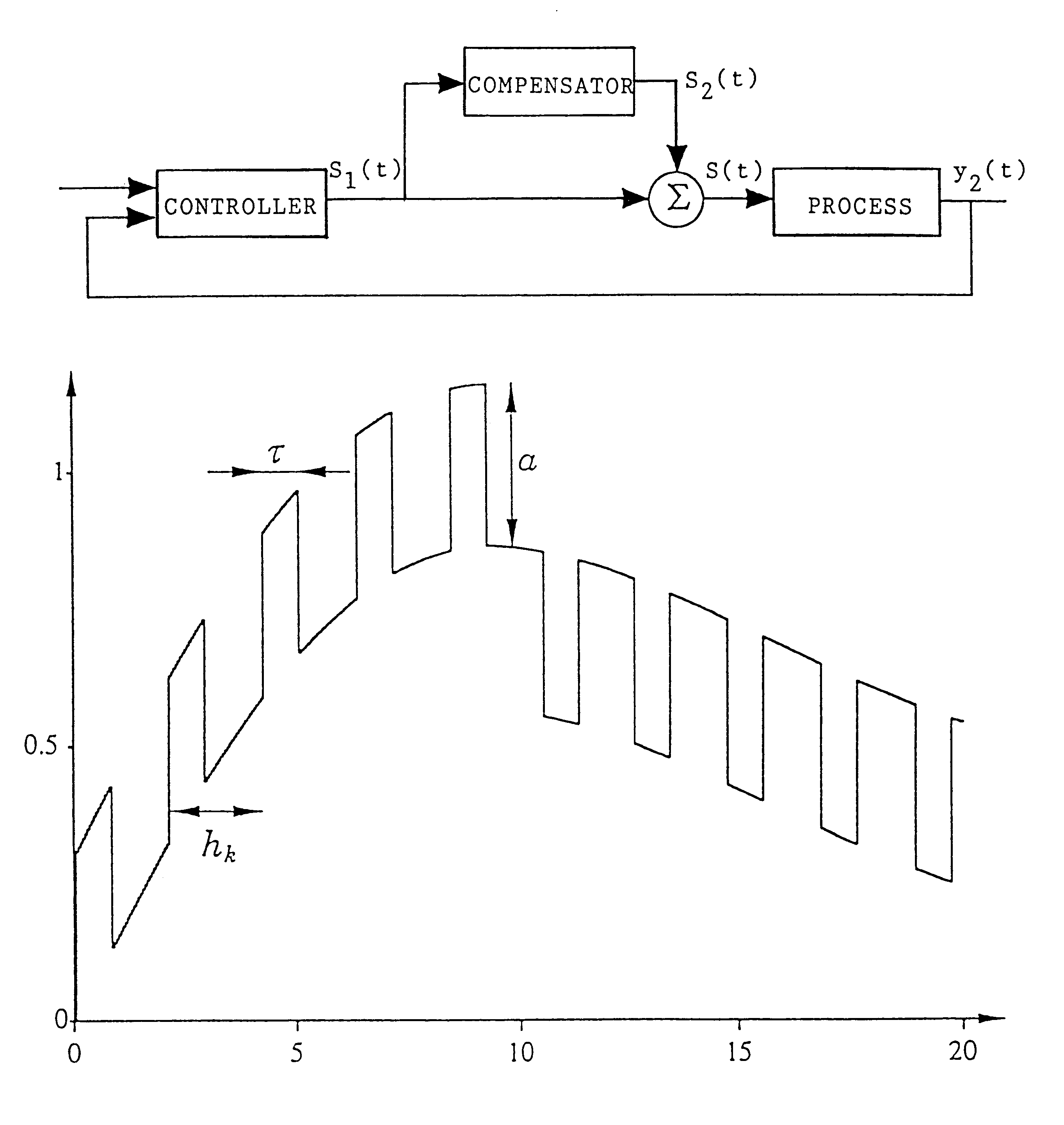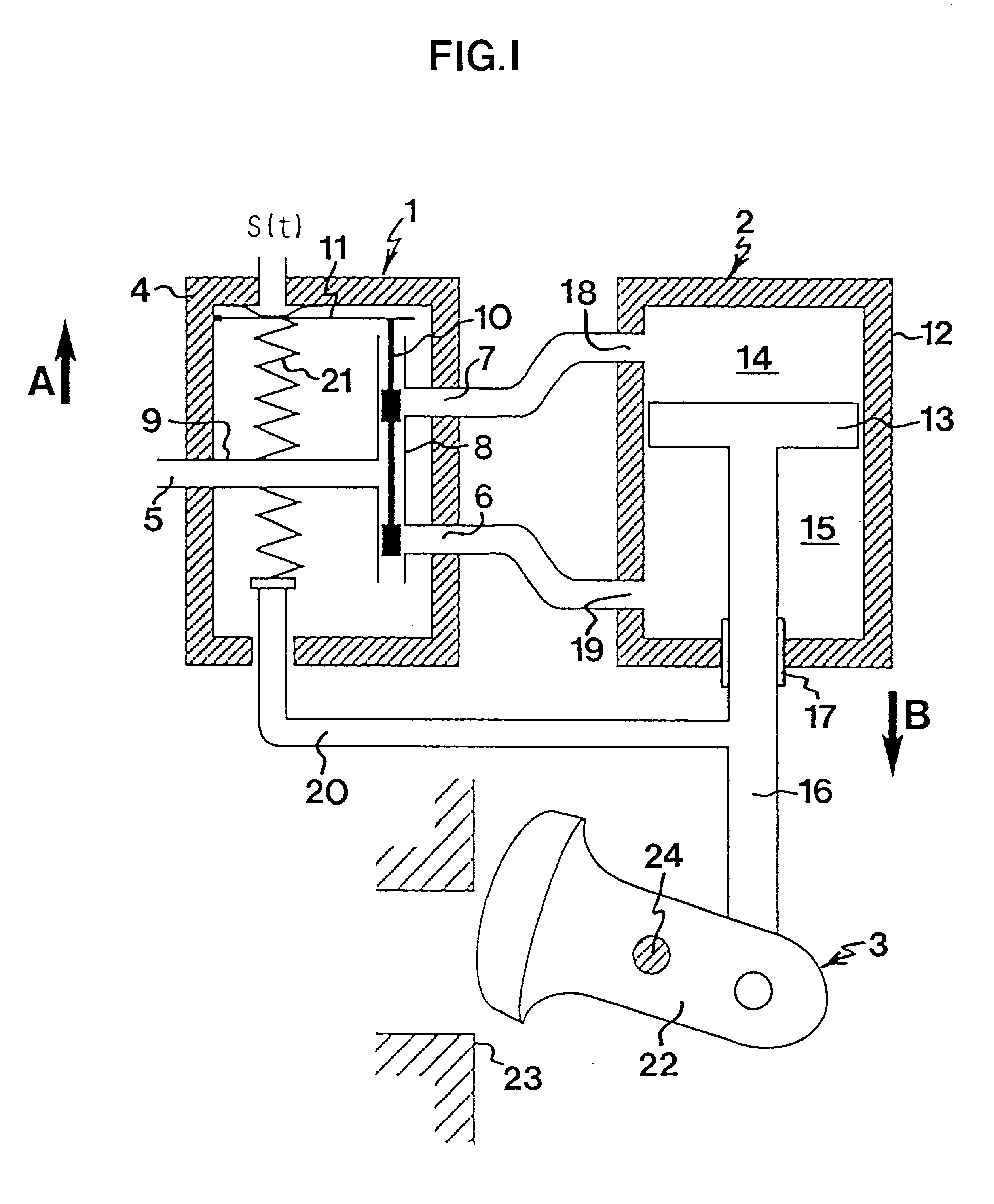Method and control system for compensating for friction
a control system and friction technology, applied in the direction of programme control, fluid pressure control, instruments, etc., can solve the problems of static friction, static friction may occur in other positions of the valve, and control occurs slowly, so as to reduce the effect of static friction
- Summary
- Abstract
- Description
- Claims
- Application Information
AI Technical Summary
Benefits of technology
Problems solved by technology
Method used
Image
Examples
Embodiment Construction
FIG. 1 is a schematic view of one type of pneumatic control valve. The three main parts of the control valve are a valve positioner 1, an actuator 2 and a valve 3, the actuator 2 and the valve 3 together forming an actuating means, i.e. the means subjected to the above-mentioned static friction.
The valve positioner 1 is arranged in a casing 4, which is provided with an air supply opening 5, a lower connecting port 6 and an upper connecting port 7. The air supply opening 5 is connected to a compressed air source (not shown) applying a constant air pressure to the valve positioner 1. The connecting ports 6, 7 are interconnected by means of a first duct 8, which in turn is connected to the air supply opening 5 by means of a second duct 9. In the first duct 8, a pilot valve 10 is arranged in the form of a movable slide, which is connected to an operable diaphragm 11.
The actuator 2 comprises a cylinder 12 and a piston 13 movably arranged in the cylinder and dividing the cylinder into an ...
PUM
 Login to View More
Login to View More Abstract
Description
Claims
Application Information
 Login to View More
Login to View More - R&D
- Intellectual Property
- Life Sciences
- Materials
- Tech Scout
- Unparalleled Data Quality
- Higher Quality Content
- 60% Fewer Hallucinations
Browse by: Latest US Patents, China's latest patents, Technical Efficacy Thesaurus, Application Domain, Technology Topic, Popular Technical Reports.
© 2025 PatSnap. All rights reserved.Legal|Privacy policy|Modern Slavery Act Transparency Statement|Sitemap|About US| Contact US: help@patsnap.com



